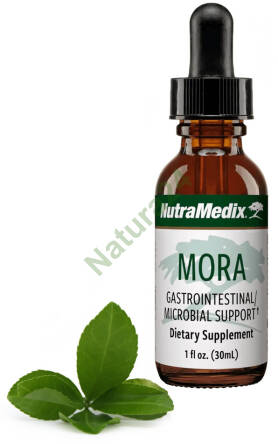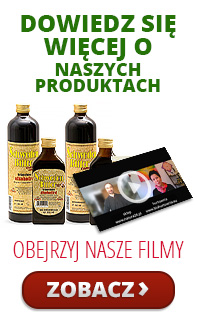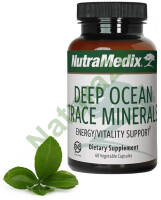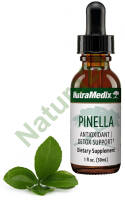Mora Microbial Defence Nutramedix 30ml
- Add feedback:
- Code: 8359
- Manufacturer: Nutramedix
-
Availability:
 Exists
Exists
- szt.
- 26.82 € 25.37 €

Mora 30 ml
TO RESOLVE:
- LYME DISEASE
- INFLAMMATION
- BACTERIAL INFECTIONS
- FUNGAL INFECTIONS
- PARASITIC INFECTIONS
General Description
Mora is a proprietary blend of the extracts of three plants Blackberry, Capirona, and Yarrow. Traditionally, Yarrow (Achillea millefolium) has been used to treat a number of medical conditions. It was used to help stop minor bleeding and to treat wounds, to treat inflammation in a number of conditions, fight fevers, treat gastrointestinal conditions, lessen heavy menstrual bleeding, and improve circulation. Some of the compounds found in Yarrow that may explain its medicinal benefits are apigenin, luteolin, centaureidin, casticin, artemetin, paulitin, isopaulitin, psilostachyin, desacetylmatricarin and sintenin. Traditionally, blackberry leaf tea (Rubus fruticosus) has been used to treat parasites and Capirona (Calycophyllum spruceanum) to treat diabetes, soothe the skin and for fungal, bacterial and parasitic infections.
Some Reported Medicinal Properties
• ANTI-PARASITIC
• ANTI-BACTERIAL
• ANTI-FUNGAL
• ANTI-MOTILITY EFFECT
• ANTI-OXIDANT ACTIVITY
• ANTI-NOCICEPTIVE EFFECT (increases tolerance for pain)
• ESTROGENIC ACTIVITY
• CHOLERETIC EFFECT
• CYTOPROTECTIVE
Research On NutraMedix Product
IN VITRO – LYME DISEASE
Priyanka A.S. Theophilus M.S., Eva Sapi Ph.D. (2013). In Vitro Effect of Peruvian Antimicrobial Agents on Borrelia burgdorferi Full Article
IN VIVO – ACUTE ORAL TOXICITY TESTS
An acute oral toxicity study was conducted by the University of Guayaquil, Ecuador concluding that Mora did not produce toxic effects, thus the product is considered practically innocuous for humans when administered in the acute form. Therefore; studies of acute toxicity at higher doses in humans are not necessary. Full Article
Medical Conditions
(peer-reviewed journals)
ADJUNCTIVE TO CHEMOTHERAPY
Miranzadeh,S., Adib-Hajbaghery, M., Soleymanpoor, L., & Ehsani, M. (2015). Effect of adding the herb Achilleamillefolium on mouthwash on chemotherapy induced oral mucositis in cancer patients: A double-blind randomized controlled trial. European Journal of Oncology Nursing, 19(3), 207-213. Full Article
ANXIETY
Fernández-Demeneghi, R., Rodríguez-Landa, J. F., Guzmán-Gerónimo,R. I., Acosta-Mesa, H. G., Meza-Alvarado, E., Vargas-Moreno, I., &Herrera-Meza, S. (2019). Effect of blackberry juice (Rubus fruticosus L.) on anxiety-like behaviour in Wistar rats. International journal of food sciences and nutrition, 1-12. Full Article
CANCER
Amini Navaie, B., Kavoosian, S., Fattahi, S., Hajian-Tilaki, K., Asouri, M.,Bishekolaie, R., & Akhavan-Niaki, H. (2015). Antioxidant and cytotoxic effect of aqueous and hydroalcoholic extracts of the Achillea millefolium L. on MCF-7 breast cancer cell line. International Biological and Biomedical Journal, 1(3), 119-125. Full Article
ANTIOXIDANT
Villalva, M., Jaime, L., Villanueva-Bermejo,D., Lara, B., Fornari, T., Reglero, G., & Santoyo, S. (2019). Supercritical anti-solvent fractionation for improving antioxidant and anti-inflammatory activities of an Achillea millefolium L. extract. Food Research International, 115, 128-134. Full Article
Monforte, M. T., Smeriglio, A.,Germanò, M. P., Pergolizzi, S., Circosta, C., & Galati, E. M. (2018). Evaluation of antioxidant, antiinflammatory, and gastroprotective properties of Rubus fruticosus L. fruit juice. Phytotherapy research, 32(7), 1404-1414. Full Article
ANTITUMOR
Pereira, J. M., Peixoto, V., Teixeira,A., Sousa, D., Barros, L., Ferreira, I. C., & Vasconcelos, M. H.(2018). Achillea millefolium L. hydroethanolic extract inhibits growth of human tumor cell lines by interfering with cell cycle and inducing apoptosis. Food and Chemical Toxicology. Full Article
ANTIMUTAGENIC
Hussein, A. A., Al-Ezzy, R. M., & Abdallah, M. T. (2019). Biochemical, Enzymatic, and Immunological Study on Antimutagenic Achillea millefolium Methanolic Extract in vivo. Journal of Pharmacy and Pharmacology,7, 69-74. Full Article
MULTIPLE SCLEROSIS
Ayoobi, F., Moghadam-Ahmadi, A.,Amiri, H., Vakilian, A., Heidari, M., Farahmand, H., ... & Shamsizadeh, A.(2019). Achillea millefolium is beneficial as an add-on therapy in patients with multiple sclerosis: A randomized placebo-controlled clinical trial. Phytomedicine, 52, 89-97. Full Article
Medicinal Properties
(peer-reviewed journals)
ANTI-INFLAMMATORY
Benedek, B., Kopp, B., & Melzig, M. F. (2007). Achillea millefolium L. sl–Is the anti-inflammatory activity mediated by protease inhibition?. Journal of Ethnopharmacology, 113(2), 312-317. Full Article
Benedek, B., & Kopp, B. (2007). Achillea millefolium L. sl revisited: recent findings confirm the traditional use. Wiener Medizinische Wochenschrift, 157(13-14), 312-314. Full Article
ANTIBACTERIAL
Thanina, A. C., Mourad, B. E. N. D. A. H. O. U., & Karim, A. R. A. B. (2015). Antibacterial activity of two extracts from Rubus fruticosus L. against resistant pathogens and their antioxidant potential. African Journal of Microbiology Research, 9(18), 1255-1262. Full Article
Yakhkeshi, S., Rahimi, S., & Hemati Matin, H. R. (2012). Effects of yarrow (Achillea millefolium L.), antibiotic and probiotic on performance, immune response, serum lipids and microbial population of broilers. Journal of Agricultural Science and Technology, 14(4), 799-810. Full Article
Novaković, A. R., Radusin, T. I., Tomšik, A. M., & Ikonić, P.M. (2018). PLA films loaded with Achillea millefolium: In vitro antibacterial effects. Food and Feed Research, 45(1), 45-52. Full Article
ANTIMICROBIAL
Riaz, M., Ahmad, M., & Rahman, N. (2011). Antimicrobial screening of fruit, leaves, root and stem of Rubus fruticosus. Journal of Medicinal Plants Research, 5(24), 5920-5924. Full Article
Shahbazi, Y., & Zadeh, M. S. (2008). In vitro assessment of antimicrobial efficacy of alcoholic extract of Achillea millefolium in comparison with penicillin derivatives. J Anim Vet Adv, 7(4), 508-11. Full Article
Candan, F., Unlu, M., Tepe, B., Daferera, D., Polissiou, M., Sökmen, A., & Akpulat, H. A. (2003). Antioxidant and antimicrobial activity of the essential oil and methanol extracts of Achillea millefolium subsp. millefolium Afan.(Asteraceae). Journal of Ethnopharmacology, 87(2-3), 215-220. Full Article
ANTIOXIDANT
Zafra-Rojas, Q., Cruz-Cansino, N., Delgadillo-Ramírez, A., Alanís-García, E., Añorve-Morga, J., Quintero-Lira, A., ... & Ramírez-Moreno, E. (2018). Organic Acids, Antioxidants, and Dietary Fiber of Mexican Blackberry (Rubus fruticosus) Residues cv. Tupy. Journal of Food Quality, 2018. Full Article
Barut, E. N., Barut, B., Engin, S., Yıldırım, S., Yaşar, A., Türkiş, S., ... & Sezen, F. S. (2017). Antioxidant capacity, anti-acetylcholinesterase activity and inhibitory effect on lipid peroxidation in mice brain homogenate of Achillea millefolium. Turkish Journal of Biochemistry, 42(4), 493-502. Full Article
Becker, L., Zaiter, A., Petit, J., Zimmer, D., Karam, M. C., Baudelaire, E., ... & Dicko, A. (2016). Improvement of antioxidant activity and polyphenol content of Hypericum perforatum and Achillea millefolium powders using successive grinding and sieving. Industrial Crops and Products, 87, 116-123. Full Article
Georgieva, L., Gadjalova, A., Mihaylova, D., & Pavlov, A. (2015). Achillea millefolium L.-phytochemical profile and in vitro antioxidant activity. International Food Research Journal, 22(4), 1347. Full Article
Fierascu, I., Ungureanu, C., Avramescu, S. M., Fierascu, R. C., Ortan, A., Soare, L. C., & Paunescu, A. (2015). In vitro antioxidant and antifungal properties of Achillea millefolium L. Rom Biotechnol Lett, 20, 10626-36. Full Article
Bhagat, M., & Thusoo, S. (2015). Phytochemical, Cytotoxic and Immunomodulatory Analysis of an Indian Blackberry Rubus fruticosus. Journal of Biologically Active Products from Nature, 5(5), 339-348. Full Article
Asnaashari, M., Tajik, R., & Khodaparast, M. H. H. (2015). Antioxidant activity of raspberry (Rubus fruticosus) leaves extract and its effect on oxidative stability of sunflower oil. Journal of food science and technology, 52(8), 5180-5187. Full Article
Trumbeckaite, S., Benetis, R., Bumblauskiene, L., Burdulis, D., Janulis, V., Toleikis, A., ... & Jakštas, V. (2011). Achillea millefolium L. sl herb extract: Antioxidant activity and effect on the rat heart mitochondrial functions. Food Chemistry, 127(4), 1540-1548. Full Article
Potrich, F. B., Allemand, A., da Silva, L. M., dos Santos, A. C., Baggio, C. H., Freitas, C. S., ... & Marques, M. C. A. (2010). Antiulcerogenic activity of hydroalcoholic extract of Achillea millefolium L.: involvement of the antioxidant system. Journal of Ethnopharmacology, 130(1), 85-92. Full Article
Giorgi, A., Mingozzi, M., Madeo, M., Speranza, G., & Cocucci, M. (2009). Effect of nitrogen starvation on the phenolic metabolism and antioxidant properties of yarrow (Achillea collina Becker ex Rchb.). Food Chemistry, 114(1), 204-211. Full Article
Teixeira, R. D. O., Camparoto, M. L., Mantovani, M. S., & Vicentini, V. E. P. (2003). Assessment of two medicinal plants, Psidium guajava L. and Achillea millefolium L., in vitro and in vivo assays. Genetics and Molecular Biology, 26(4), 551-555. Full Article
Santos, S. S., Rodrigues,L. M., Costa, S. C., & Madrona, G. S. (2017). Antioxidant compounds from blackberry (Rubus fruticosus) pomace: Microencapsulation by spray-dryer and pH stability evaluation. Food Packaging and Shelf Life. Full Article
García-Risco, M. R., Mouhid, L., Salas-Pérez, L., López-Padilla,A., Santoyo, S., Jaime, L., ... & Fornari, T. (2017). Biological activities of Asteraceae (Achillea millefolium and Calendula officinalis) and Lamiaceae (Melissa officinalis and Origanum majorana) plant extracts. Plant foods for human nutrition, 72(1), 96-102. Full Article
ANTIDIARRHOEL
Bais, S., Gill, N. S., & Shandil, S. (2014). Antidiarrhoel activity of methanolic extract of Achillea millefolium L. leaves in albino rats. Der Pharma Chemica, 6(5), 308-14. Full Article
ANTIFUNGAL
Aydın, S., & Sevindik, E. (2018). Achillea millefolium L. subsp. millefolium essential oil’s antifungal effect. European Journal of Biological Research, 8(3),153-156. Full Article
ANTIULCER
Cavalcanti, A. M., Baggio, C. H., Freitas, C. S., Rieck, L., De fSousa, R. S., Da Silva-Santos, J. E., ... & Marques, M. C. A. (2006). Safety and antiulcer efficacy studies of Achillea millefolium L. after chronic treatment in Wistar rats. Journal of ethnopharmacology, 107(2), 277-284. Full Article
ANTISPASMODIC
Moradi, M., Rafieian-Koupaei, M., Imani-Rastabi, R., Nasiri, J., Shahrani, M., Rabiei, Z., & Alibabaei, Z. (2013). Antispasmodic effects of yarrow (Achillea millefolium L.) extract in the isolated ileum of rat. African Journal of Traditional, Complementary and Alternative Medicines, 10(6), 499-503. Full Article
ANTITUMOR
Tozyo, T., YOSHIMURA, Y., SAKURAI, K., UCHIDA, N., TAKEDA, Y., NAKAI, H., & ISHII, H. (1994). Novel antitumor sesquiterpenoids in Achillea millefolium. Chemical and Pharmaceutical Bulletin, 42(5), 1096-1100. Full Article
ANTI-LIMNATIS
Bahmani, M., Abdi, F., Adineh, A., Hassanzadazar, H., Eghbali, B., Gholami-Ahangaran, M., & Rafieian-Kopaei, M. (2014). The Anti-Leech Effect of Ethanolic Extract of Achillea Millefolium L. Compared to Levamisole and Niclosamide on Limnatis Nilotica. Studia Universitatis" Vasile Goldis" Arad. Seria Stiintele Vietii (Life Sciences Series), 24(3), 293. Full Article
ANXIOLYTIC
Baretta, I. P., Felizardo, R. A., Bimbato, V. F., dos Santos, M. G. J., Kassuya, C. A. L., Junior, A. G., ... & Andreatini, R. (2012). Anxiolytic-like effects of acute and chronic treatment with Achillea millefolium L. extract. Journal of Ethnopharmacology, 140(1), 46-54. Full Article
HEPATOPROTECTIVE
Yaeesh, S., Jamal, Q., Khan, A. U., & Gilani, A. H. (2006). Studies on hepatoprotective, antispasmodic and calcium antagonist activities of the aqueous‐methanol extract of Achillea millefolium. Phytotherapy Research: An International Journal Devoted to Pharmacological and Toxicological Evaluation of Natural Product Derivatives, 20(7), 546-551. Full Article
GIT HEALTH
Yakhkeshi, S., Rahimi, S., & Hemati Matin, H. R. (2012). Effects of yarrow (Achillea millefolium L.), antibiotic and probiotic on performance, immune response, serum lipids and microbial population of broilers. Journal of Agricultural Science and Technology, 14(4), 799-810. Full Article
SPASMOLYTIC
Lemmens-Gruber, R., Marchart, E., Rawnduzi, P., Engel, N., Benedek, B., & Kopp, B. (2006). Investigation of the spasmolytic activity of the flavonoid fraction of Achillea millefolium sl on isolated guinea-pig ilea. Arzneimittelforschung, 56(08), 582-588. Full Article
WOUND HEALING
Nirmala, S., & Karthiyayini, T. (2011). Wound healing activity on the leaves of Achillea millefolium L. by excision, incision, and dead space model on adult wistar albino rats. Int Res J Pharm, 2(3), 240-245. Full Article
Hemmati, A. A., Arzi, A., & Amin, M. (2002). Effect of Achillea millefolium extract in wound healing of rabbit. Journal of Natural Remedies, 2(2), 164-167. Full Article
VASOPROTECTIVE
Dall’Acqua, S., Bolego, C., Cignarella, A., Gaion, R. M., & Innocenti, G. (2011). Vasoprotective activity of standardized Achillea millefolium extract. Phytomedicine, 18(12), 1031-1036. Full Article
VARIOUS USES
Četojević-Simin, D. D., Ranitović, A. S., Cvetković, D. D., Markov, S. L., Vinčić, M. N., & Đilas, S. M. (2017). Bioactivity of blackberry (Rubus fruticosus L.) pomace: Polyphenol content, radical scavenging, antimicrobial and antitumor activity. Acta Periodica Technologica, 2017(48), 63-76. Full Article
Verma, R., Gangrade, T., Punasiya, R., & Ghulaxe, C. (2014). Rubus fruticosus (blackberry) use as an herbal medicine. Pharmacognosy reviews, 8(16), 101. Full Article
Zia-Ul-Haq, M., Riaz, M., De Feo, V., Jaafar, H. Z., & Moga, M. (2014). Rubus fruticosus L.: constituents, biological activities and health related uses. Molecules, 19(8), 10998-11029. Full Article
Khan, A. U., & Gilani, A. H. (2011). Blood pressure lowering, cardiovascular inhibitory and bronchodilatory actions of Achillea millefolium. Phytotherapy Research, 25(4), 577-583. Full Article
Patient Reports
"I've used this with success to help calm eczema flare-ups during my metal cleanse; plus, my cat's chin acne. I've also combined it with NutraMedix Houttuynia for nose redness and pain. I think it is great!" -B.L
"Great product for Lyme disease like all Cowden products. This is by far the best protocol to address Lyme and the most cost effective too. Strong stuff without side effects. Until now there is no better option available to keep Lyme in remission."-F.S.
Dosage Information
30 drops twice daily at least 30 minutes before meals (start with 1 drop in 4 oz. of water adding a drop with each dose as tolerated).
Safety Information
An acute oral toxicity study was conducted by the University of Guayaquil, Ecuador concluding that Mora did not produce toxic effects, thus the product is considered practically innocuous for humans when administered in the acute form. Therefore; studies of acute toxicity at higher doses in humans are not necessary. Full Article







Wszystko przebiegło pomyślnie. Polecam!
SUPER KONTAKT, B. SZYBKA DOSTAWA, SUPER PRODUKT, SUPER SPRZEDAJACY - POLECAM BAAAARDZO
Z ogromną przyjemnością wystawiam komentarz POZYTYWNY!!! Wszystko sprawnie, miło i przyjemnie!!! Przesyłka ekspresowa.!!! GORĄCO POLECAM
Przesyłka wysłana w błyskawicznym tempie Juz na drugi dzień rano.Polecam w 100%.
olejek rycynowy rewelacyjny